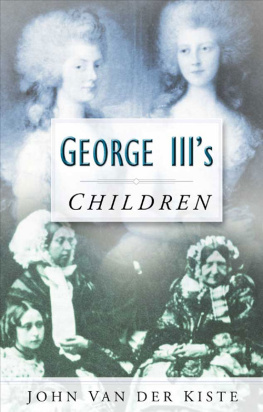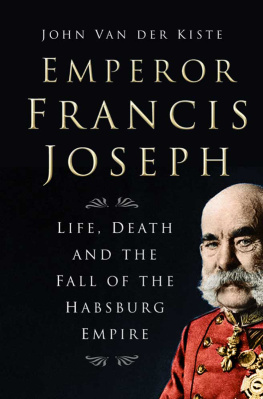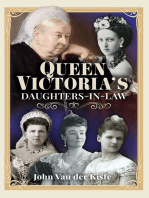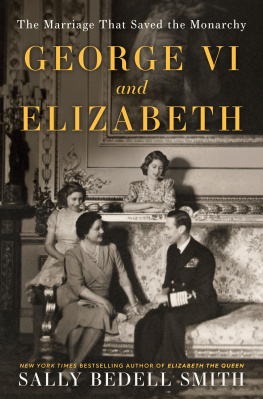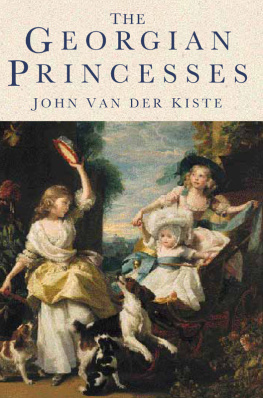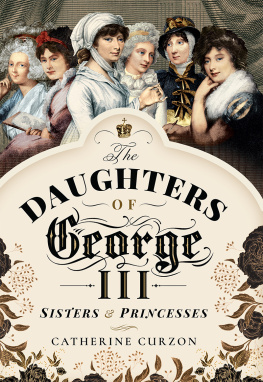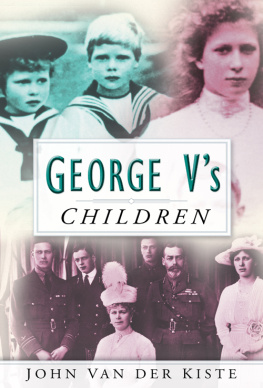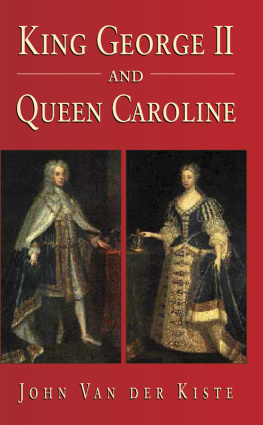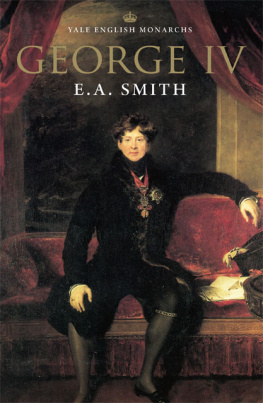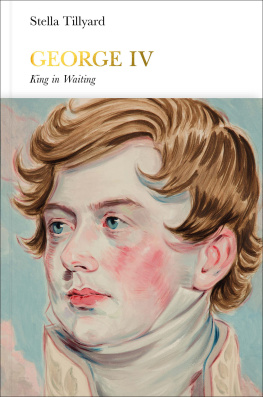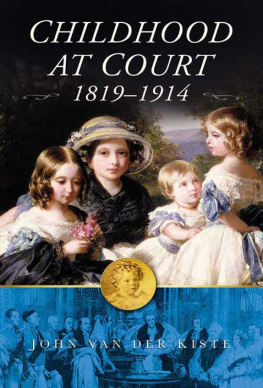
Contents
F or many years, the Hanoverian kings and their families were ridicule personified. Such a process began with the Victorians, for Queen Victorias first Prime Minister, Lord Melbourne, never ceased to impress on her what a foolish crowd her uncles (three of whom were still alive and in good health at her accession) had always been. The sons of King George III, the damnedest millstones round the neck of any government, in Wellingtons impatient yet elegant phrase, received an almost uniformly bad press for nearly a century after the last one died in 1851.
Tentative efforts to help put the record straight began with the publication of Roger Fulfords Royal Dukes in 1933. He related in his Foreword that he produced his work on the advice of an unnamed contemporary who suggested he ought to write a book about those risible Dukes. Yet, as he recognized, there was much clearing through the labyrinth of legend and rumour to be done.
In particular, Ernest, Duke of Cumberland and King of Hanover, stood out from the pages of history as a shapeless lump of filth, from which it is now almost impossible to scrape off the mud and see what manner of man it really concealed. Largely through the efforts of Whig politicians, who were in power for much of the first forty years of the nineteenth century, Ernest became one of the most vilified characters in history since Attila the Hun. At various times he was reputed to have committed incest, rape, sodomy, and murder, and driven at least one cuckolded husband to suicide. Likewise King George IV, who was admittedly extravagant, untrustworthy, and behaved badly to his obnoxious wife, was thought to be the devil incarnate. His successor King William IV apparently spat at passers-by from his carriage window, and it was said that bets were placed on how long it would be before he went irrevocably insane like his father. This compounded the rather less than accurate supposition that King George III was mad, for it has been revealed comparatively recently that he suffered severely from porphyria, the symptoms of which were close to, but not completely consistent with, madness.
It suited the government, and the mentors of the young Queen Victoria and Prince Albert, to portray King George IIIs large family as something of an aberration. Comparisons may be drawn not unprofitably with Shakespeares historical plays, produced partly to celebrate the glories of Tudor England and Queen Elizabeth I and to denigrate the last King of the preceding Yorkist dynasty, Richard III.
Had the politicians not made their contribution, the colourful distortions of contemporary diarists such as Greville and Princess Lieven would still have been sufficient to sustain the legends. Charles Cavendish Fulke Greville, Clerk to the Privy Council and Secretary to the Island of Jamaica, was a Whig whose dislike of royalty did not prevent him from accepting well-paid posts from the sovereigns whom he so despised; his diaries, originally published in 1872 and described as indiscreet by Queen Victoria, make entertaining but not altogether accurate reading. Princess Lieven, wife of the Russian Ambassador and an indefatigable source of political gossip, likewise had scant regard for the truth. It was the letters, diaries and memoirs of people such as these whose half-truths were long accepted as fact.
Only with the publication of selections from the private correspondence of Kings George III and IV, edited by Professor Aspinall, has a truer picture started to emerge. The surviving letters, inevitably, only tell part of the story. King George IV wrote little, partly as he suffered from a weakness of and twitching in his hands in middle and later life; and an ill-advised series of passionate love-letters to the actress Mary Robinson in his youth, which had to be bought back at enormous cost by his enraged father, can have done little to encourage him to commit his thoughts to paper thereafter.
A stream of biographies since 1960, notably Anthony Birds The damnable Duke of Cumberland (which demolishes many of the more colourful myths pertaining to its subject and his family), volumes by John Brooke and Stanley Ayling on George III, by Olwen Hedley on Queen Charlotte, by Philip Ziegler on William IV, Christopher Hibberts two-volume study of George IV, and studies of the Dukes of Kent and Sussex by Mollie Gillen, have had the benefit of these and of other material which had long been unavailable, and only at last are some of the legends being laid to rest. Perhaps it is significant, however, that the Duke of Cambridge, whose life of seventy-six years was never tainted by debt, scandal or parental disapproval, has yet to find a biographer of his own. To quote Lucille Iremonger, there is not much to be said of him, perhaps because he was the only son of George III to live above the age of four and keep all the commandments.
Over the years, the family have been frequently analyzed as individuals, though rarely as a group. The Princesses have been dealt with jointly by Dorothy M. Stuart, Lucille Iremonger (whose Love and the Princess purports to be a biography of Sophia, but is in effect a study of her sisters as well) and Morris Marples; but by and large their lives were so devoid of excitement that it would be idle to pretend that they merit biographies to themselves.
The concluding remarks of Percy Fitzgerald from his two-volume, Dukes and Princesses of the Family of George III , published in 1882, can be scarcely improved on more than a century later. He admits with restraint that they were remarkable persons, but that in most of the members of the male family, with certain abilities, there was a strain of folly or eccentricity, owing a good deal to unrestrained self-indulgence and love of pleasure, which led to debt and difficulties; and which, in its turn, led to abandonment of principle, to strange shifts, and to careless oddities and recklessness. The King of Hanover, he maintains, was the one gifted with most ability, but unlovable; that King George IV was clever, versatile, and accomplished, but selfish and self-indulgent; that the Duke of York was perhaps the best of the family, but his debts had the usual degrading effect; that King William IV was straightforward and good-natured, but eccentric and wrong-headed; that the Duke of Kent was amiable, but unlucky: a long-suffering personage of a really affectionate disposition; that the Duke of Cambridge had perhaps the most respectable career of all, as he was the least talked of; and that the Duke of Sussex had cultivated literary tastes, and his recorded observations, oral and written, show sound sense and study.
Fitzgerald was, however, writing at a time when little was known about them, and myths outnumbered fact. His remarks were both cautious and relatively accurate. All the same, the time seems right for an assessment of their lives as a family in the light of more recent research; and this I have endeavoured to do.
As ever, I am most grateful for the constant help, encouragement and advice during the writing of this book to my parents, Wing Commander Guy and Nancy Van der Kiste. I am also indebted to the staff of the Kensington and Chelsea Public Libraries, for a blissful morning of rummaging around in their superb biography collection; to Shirley Stapley, for the loan of material; to Steven Jackson, of the Commemorative Collectors Society; and last but not least, to Peter Clifford, Rosemary Aspinwall and the rest of the editorial staff, for their work in bringing this long-cherished project to fruition.
John Van der Kiste
Reference Notes
A BBREVIATIONS :
G III, The later correspondence of George III, 17831810 , Aspinall (ed.), 5 vols, 19627.
Next page
